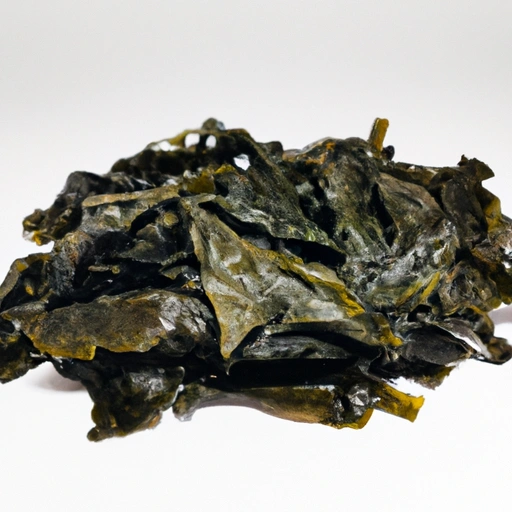Wakame
Description

Wakame is a type of edible seaweed that has been a staple in Japanese cuisine for centuries. This sea vegetable is known for its subtle sweet flavor and satiny texture. Used both fresh and dried, wakame is versatile in the kitchen and can easily adapt to various culinary needs. It is rich in nutrients and is often highlighted in health-conscious dishes. Around the world, wakame is referenced in both metric units like grams and milliliters as well as American units such as cups and ounces, catering to a global audience.
Common uses
Wakame is commonly used to add flavor and nutrients to soups, salads, and side dishes. It can also be enjoyed as a snack when toasted. The mild, slightly sweet taste makes wakame a versatile ingredient that can enhance a variety of dishes without overpowering other flavors.
Nutritional value
Calories
Wakame is low in calories, with a typical serving of about 10 grams (2 teaspoons) containing only around 5 calories.
Protein
It is a good source of high-quality protein, with approximately 3 grams of protein per 100 grams (3.5 ounces) of wakame.
Fat
Wakame has a minimal fat content, with less than 1 gram of fat per serving.
Carbohydrates
Carbohydrates in wakame are primarily in the form of dietary fiber, with around 9 grams per 100 grams (3.5 ounces).
Vitamins
Rich in vitamins, wakame provides a good amount of Vitamin A, C, E, and K, as well as niacin and folate.
Minerals
The seaweed is a treasure trove of minerals such as iodine, calcium, magnesium, and iron.
Health benefits
Adding wakame to your diet can contribute to improved heart health, thyroid function, and digestion. It may also aid in weight management and provide anti-inflammatory benefits.
Potential risks
While wakame is generally safe for consumption, excessive intake can lead to too much iodine, which might affect thyroid function. Those with shellfish allergies should also be cautious due to potential cross-contamination.
Common recipes
Wakame is a star ingredient in miso soup, sunomono (vinegar salads), and various Asian-inspired dishes. It can also be found in western recipes that call for a unique, oceanic flavor.
Cooking methods
Dried wakame is often rehydrated in water before use, while fresh wakame can be blanched or served raw. It is also suitable for stir-frying and simmering.
Pairing with other ingredients
Wakame pairs well with ingredients such as cucumber, tofu, sesame seeds, and seafood. It complements both light vinaigrettes and robust, umami-rich sauces.
Summary
Wakame is an adaptable, nutrient-rich seaweed that has found its place in various cuisines around the world. Low in calories and high in vitamins and minerals, it is a healthful addition to many dishes. Whether used in traditional Asian recipes or innovative contemporary dishes, wakame offers a unique flavor and texture that can elevate any meal.